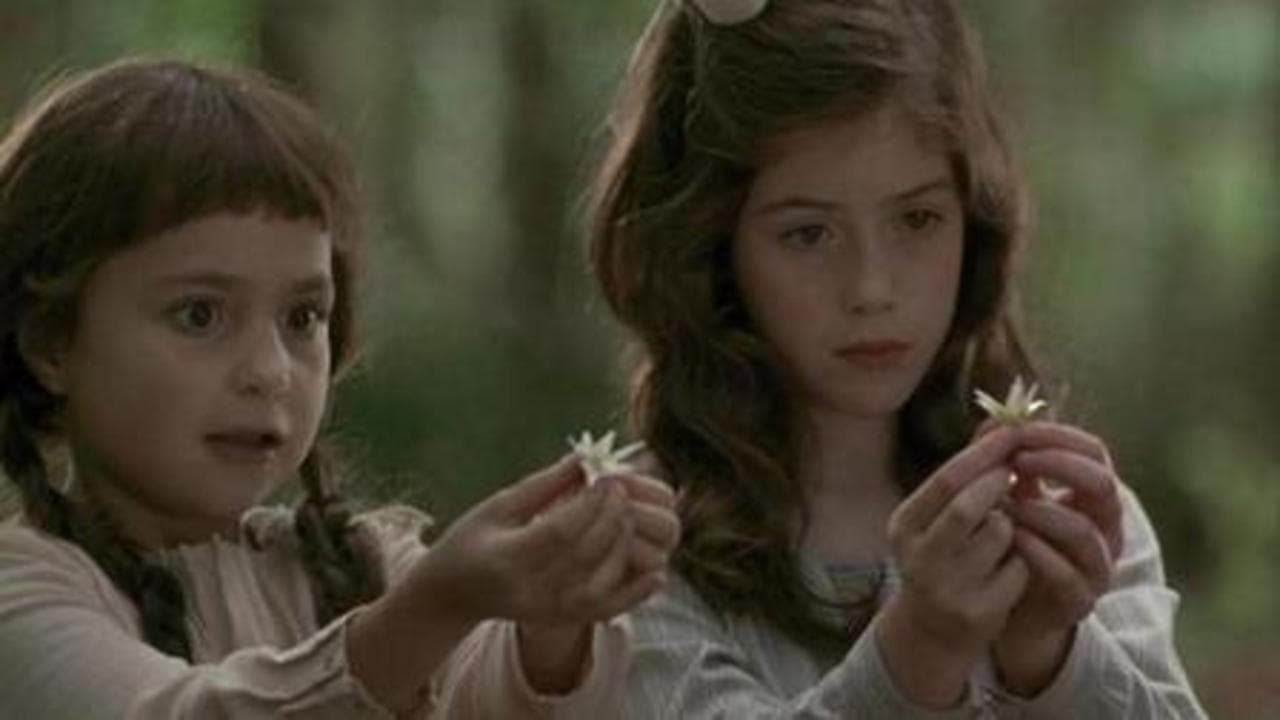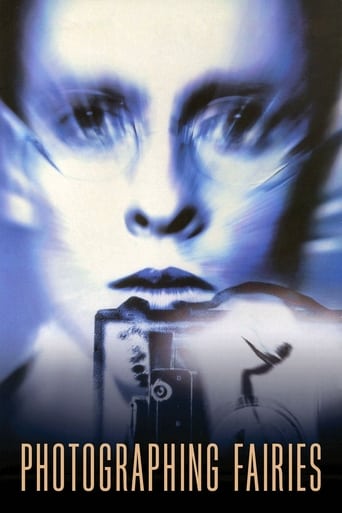

Photographing Fairies is directed by Nick Willing who co-adapts with Chris Harrald from the book of the same name written by Steve Szilagyi. It stars Toby Stephens, Emily Woof, Ben Kingsley, Frances Barber & Philip Davis. Music is scored by Simon Boswell and John DeBorman is the cinematographer. Plot finds Stephens as photographer Charles Castle, a level headed man who took delight in debunking the Cottingley Fairies pictures as being fake. However, this brings him into contact with the Templeton family and what appears to be an authentic looking image of a tiny fairy. It's the beginning of journey that will prove to be as magical as it is dangerous.No! This is not the fairy film about the girls who faked the Cottingley Fairies pictures. Released the same year, that film was called Fairy Tale: A True Story, a very nice film in its own right, but this is a very different animal. Very much a unique film, Photographing Fairies has a number of words that frequently crop up when reading about, or discussing it. Weird, hypnotic, beautiful, tragic, odd, haunting, dreamy, surreal and poetic, any one of those can be used to describe Nick Willing's movie. Ultimately it's the word mystical that best sums it up, with the film weaving together intriguing premise's that in turn are played out with gorgeous visuals. Charles Castle's search for the truth is not merely that, himself in grief, as he searches for physical evidence, it leads him to something more, arguably something all encompassing and not worldly. The movie poses many questions as it explores the likes of paganism, animism and the role of hallucinogens in bringing to life a world beyond the physical one we all know. Refreshingly, we the audience are not fed the answers, and the film is all the better for it.More known for his work on music videos, Nick Willing blasted out of the directing blocks with this as his debut big screen offering. That he hasn't gone on to far better things is a mystery given the first class work he does here. Some of the scenes here are remarkable, truly, and aided considerably by DeBorman's pin-sharp photography he's made a visually hypnotic interest story that's paced to precision. Simon Boswell provides a swirling romantic score, flecked with mystic tones and nicely entwined with Beethoven's Seventh Symphony, it's very tonally correct and worthy of re-visits on its own. The cast are on good form, with Kingsley doing creepy folk religious and Stephens a nice line in a man hurting within, showing cynical arrogance, yet opening up his layers the further he delves into the mystery. Come the finale, a tragic-beauty finale at that, the film has come full circle and it's credit to Stephens that he has been able to carry us along with him at all times. Emily Woof (Velvet Goldmine/The Full Monty) also shines bright in the difficult (spiritual) romantic role, while the child actors are thankfully adorable and never annoying.A film to capture the imagination of those with an open mind or for those with a leaning to the mystical, Photographing Fairies is a little gem. 9/10
... View MoreWhat I probably enjoyed most about PHOTOGRAPHING FAIRIES was that it's a different take on the afterlife-theme. As much as it is a compelling movie that draws you into its mystery, it also hesitates in settling on one genre which makes the movie a bit slow at times. Luckily the story is intriguing enough to keep you interested. I really wanted to see this film because of two reasons. One being director Nick Willing. I had already seen his DOCTOR SLEEP (aka HYPNOTIC) and THE RIVER KING which I enjoyed very much. The second reason was that I'd seen that other fairy-movie based on the same events involving a photograph showing a true fairy at the beginning of the 20th century. That movie was FAIRYTALE: A TRUE STORY and was released the same year as PHOTOGRAPHING FAIRIES. Even though I recall liking FAIRYTALE a little bit more, I still have to say that Nick Willing made an astonishingly beautiful debut with PHOTOGRAPHING FAIRIES.The movie is part love-story, part fairy-tale mystery, part drama and that's what slows the general development towards the final conclusion a bit down. Still, the swifting between genres happens very smoothly. The acting was very decent all the time, especially Toby Stephens playing Charles Castle. His character is given a lot of depth. He is a war-photographer who loses his fresh wife in a mountain-accident the day after their wedding. He then stumbles through his life a bit cold-hearted and unaffected by danger. After the war he turns to the routine of portrait photography. Until the day a woman walks into his office, showing him a blurry photo of a girl holding a fairy in her hand. After some tests, Charles is convinced the photo isn't fake and sets off to solve the mystery.Like I said, Charles Castle has a lot of psychological content, which is always good for a protagonist. The only problem concerning the actors I had, was with Ben Kingsley. It's a bit sad, really, but after seeing him in BLOODRAYNE and A SOUND OF THUNDER, I simply cannot take the poor man seriously anymore. The sets and costumes were all convincing as well as the occasional effects (only the scenes on the snowy mountain were clearly filmed on a set, making it all look a bit fake). The movie has a very nice musical score by Simon Boswell, but it does feel a bit too dominant at times. Even though I figured out very early the exact origin of the fairies, I couldn't possibly predict the actions of the protagonist towards the end. There were quite a lot of elements in the story I liked (the flower used as a drug to alter perception, the origin of the fairies,...) and I also liked the ending. But I thoroughly disliked the little epilogue on the mountain. What the hell were the filmmakers (probably the producers) trying to say with it? It would be very stupid to make us believe that between the prologue and epilogue the movie simply didn't happen. That might work for a psychological horror movie, but not for this type of film. So I'll rule that option out. I think I'll simply please myself with the explanation that the scriptwriter was trying to say that in a perfect world, Charles Castle would have been able to save his wife on the mountain. Sadly the real world isn't perfect, end of story. That would work more for me than the producers trying to shove a forced happy-end feeling down our throats. And otherwise I would deduct a serious amount of points from the over-all rating for PHOTOGRAPHING FAIRIES, which I refuse to do. Because this movie is beautiful and worth seeing.
... View MoreThis film was inspired by the famous "Cottingley Fairy" photographs, where, in 1917, two girls produced pictures which they claimed showed fairies at the bottom of their garden. In this film, a cynical photographer, still grieving over the death of his wife, becomes obsessed by some photographs which he believes show genuine fairies.The films well made, but it is very slow-moving. The atmosphere is very somber, in fact the whole thing is surprisingly bleak.This had the misfortune to be released around the same time as "Fairy Tale: A True Story", which was also based on the Cottingley photographs, and was far more successful. .
... View MoreOne of the best movies I have ever seen in my life and believe me I have seen quite many.With Beethoven's music this film becomes nearly perfect.It's shocking from start to end and what an end it is! If you can,do watch this movie and consider "love" and "life" once more.
... View More